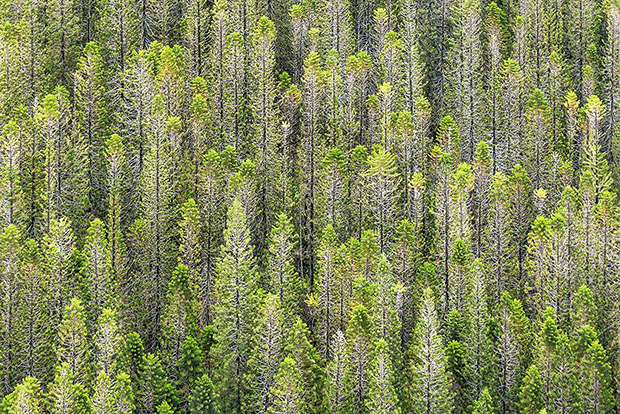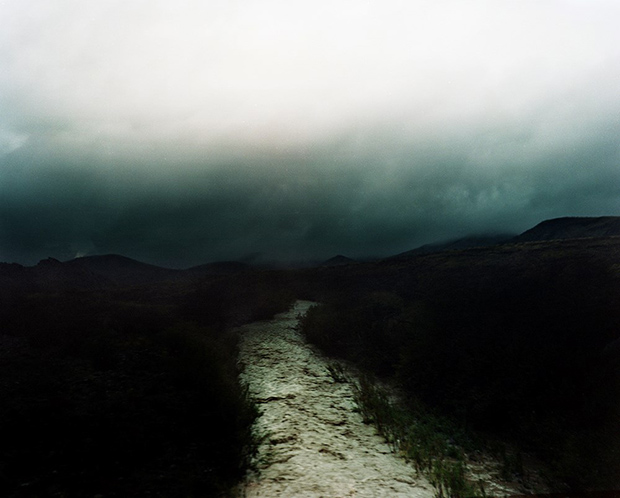Feature Shoot Emerging Photography Awards

“Mary Shannon Johnstone‘s portraits of ‘Landfill Dogs’ hit hard and linger,” Zavos says. The artist has dedicated hours of her life to dogs at her county animal shelter, taking them for long walks at a place called Landfill Park, where more than 25,000 euthanized shelter dogs have been buried. The dogs in her pictures face a similar threat; if they do not find homes, they will die.
Johnstone is also one of the winners chosen by Jennifer Kilberg of Agency Access.

“I dare you to visit Suzanne Stein’s tumblr and not spend half the afternoon pouring over her imagery and stories,” Zavos writes. Stein’s empathetic portraits of the men and women of Downtown Los Angeles and Skid Row, many of them homeless, are the result of many days spent getting to know her subjects and the ins and outs of their daily lives.

“Benoit Paille‘s been living out of a camper for three years, traveling around the world, attending rainbow gatherings, living off the grid, making images reminiscent of youthful acid trips,” Zavos writes, “Beautiful and strange, eye-popping, mysterious, edgy, these images are everything.” Benoit deals more in the human psyche than he does in real places.

“Michael Joseph has shot well over 100 portraits of young, often elusive freight train travelers and each one of them is as captivating as the last,” Zavos writes of the series Lost and Found, “I’m not distracted by the facial tattoos, dreads, cuts, piercings, etc., it’s all about the eyes in these portraits.” Joseph writes in his artist statement, “Often unseen and mistaken by their appearances, they are some of the kindest people one might meet. Their souls are open and their gift is time.”

“Diana Bagnoli’s images of a men’s secret initiation event in Senegal are poetic, painterly, dark and beautiful,” Zavos writes. The Boukout in Casamance is a rite of passage for men in the Jola community. It occurs only every 30 to 40 years, and all men involved are sworn to secrecy about what happens when they’re alone in the forest, without any contact with the rest of civilization. “The light is sublime,” Zavos adds, “I love the way she’s chosen to capture this event; it perfectly matches the intense and otherworldly ritual that she’s documenting.”

Johanna-Maria Fritz followed circus performers working in Muslim countries and recorded their stories for the series Like a Bird. “The series undermines monolithic Western narratives of life in these countries, and does so beautifully, artfully, without resorting to blunt didacticism — an approach that is perhaps the very definition of public art at its finest,” Pierson writes. Fritz’s work took her to Iran, Afghanistan, and Palestine.

Cian Oba-Smith contributes to the narrative of the overlooked contributions of African American horsemen in the United States by documenting a stable in North Philadelphia, where 97% of the population is black. “It’s so easy to become cloying or clichéd when making art that aims to challenge cultural stereotypes. Instead, Mr. Oba-Smith pushes aside sentimentality in favor of images that are empowering, complex, unique,” Pierson says, “The first image in the series — a lone horse (named “Nicki Minaj”!) tied up outside its urban stable — deserves its own, separate award. The composition and color palette are stunning. Subtlety at its most powerful.”

“I never would have guessed that I would select cheese still-lifes as a contest winner,” Pierson writes of his third pick, still life artist Dorine Bessiere, “But this series genuinely blows me away. Ms. Bessiere’s understanding of color theory is utterly brilliant. Art that employs color-theory-as-subject is usually a dry, academic affair. But by framing color theory exploration around cheese, Ms. Bessiere injects levity and humor. ‘Yes,’ she’s saying, ‘I’m bloody talented with color, but I’m also a good conversationalist.’”


In Leathered Skins, Unchained Hearts, photographer Paul Shiakallis shares the story of the Marok, or heavy metal fans living in Botswana. More specifically, he focuses on the female subculture within this world, peeling back the layers of what is normally considered a male-dominated world to reveal voices of dissent and empowerment. You can read more about the work here.

Alexander Anufriev examines modern Russia through the lens of its history and its people. “Against the backdrop of political apathy among the members of society, there are inner processes that are not as obvious to the rest of the world: clericalization, forcing of patriotism and nationalism, strengthening of censorship and propaganda,” he writes in his artist statement, “I’m trying to bring the image of Russia up to date.”

Zoe Wetherall has devoted several projects to a single purpose: investigating the complicated intersections of the natural and manmade landscape. Her graphic, abstracted aerials — many of them taken from helicopters and even hot-air balloons — seek to make sense of the world and our place within in.

“Water has woven its stories into my own,” Ansley West Rivers writes in her statement. To create Seven Rivers, she journeyed across the United States, by canoe, by car, by foot, by raft, and by driftboat, to the shores of seven historic rivers. “We stand at a precipice in the history of water,” the artist writes, “How we approach the health and use of our rivers now will determine the lifespan of fresh water.”


Brooklyn photographer Niv Rozenberg was chosen for his series Boswijck, which shares its name with the original name of the borough’s Bushwick neighborhood. “I’m intrigued by the cultural confetti reflected in its diverse and colorful architecture,” the artist writes in his statement, “The work highlights this diversity by visually isolating different architectural styles of this neighborhood and showing them as abstract two-dimensional relics.”

Gillian Hyland traveled to Havana, Cuba, to capture ambiguous and evocative photographs during a time of metamorphosis. “This series of images are little windows into Havana, and capture just a drop of the spirit you feel from the city and its people,” the artist writes, “The vibrancy of the people oozes out of them in every sense. The energy in Havana is intoxicating.”

“Mikael Hellstrom offers a hauntingly beautiful look at this small Kazakhstani community of ex-prisoners, with the color palette and use of blur superimposing a mythological quality on the bleak, gritty scenes captured therein, somehow managing to capture hope and despair at once,” Breiner says. Virgin Lands tells a story of family, loss, reconciliation, and the history and heritage of the former Soviet Union.

“Craig Becker‘s surrealist composite portraits are wholly unique, combining elements of collage, painting, sculpture and photography,” Breiner writes of the series Scratch, “Grotesque, otherworldly, and utterly phantasmagoric, they look as though they just crawled out of a great artist’s dream.” Becker works with his own photographs and archival imagery.

Garrett O. Hansen collected bullets from various gun ranges to create HAIL, a series of images of the unique forms made in the moment the bullet hits a steel wall. “Garrett’s project is brilliantly multi-layered in its exploration of gun violence through insinuation,” Briener writes, “these richly detailed images are as sculptural as they are photographic.”

Frederik Buyckx traveled to the remote and frozen corners of the world to document life in the mountains and away from the rhythms of the city. He titles his series against the cold, a reminder that the whims of nature, while nourishing and beautiful, can also be severe and cruel.

Mary Shannon Johnstone is also one of the winners chosen by Alison Zavos to receive a cash prize of $750. Her series Landfill Dogs is discussed above, and you can read more here.
“I love that Mary worked on a solid project for a period of time and was able to create a book, a website, and amazing impact on the community,” Kilberg writes, “The idea of taking the dog out of their environment and finding a symbolic ground makes these emotional images stand out. I would love to know have many dogs actually ended up getting adopted from these photographs.”

Laetitia Vancon photographs the young people of the Outer Hebridean Isles in Scotland for her series At the end of the day. As they navigate economic uncertainty, their own heritage within the landscape, and the pressures of globalization, she watches as they create their own identities and futures.

Zoe Wetherall is also one of the winners chosen by Sam Barzilay to exhibit at UPI in DUMBO, Brooklyn. Her work is discussed above.
“Zoe’s amazing graphic landscapes are super eye-catching,” Kilberg says, “She speaks about creating order from chaos, and she truly does so in her images. I love the details and balance of cold and form. I can envision how impactful these images are large in corporate offices or fine art galleries.”

Cian Oba-Smith is also one of the winners chosen by Stephen Pierson to exhibit at ArtBridge in NYC. His series Concrete Horsemen is discussed above.

Nicolas Blandin documents the remaining traces of the Termignon blue cheese tradition in France’s Vanoise National Park. Only five of these cheese producers remain, holding on to their heritage, ancestry, and connection with the land.

Ansley West Rivers is also one of the winners chosen by Sam Barzilay to exhibit at United Photo Industries. Her series Seven Rivers is discussed above.
Feature Shoot Emerging Photography Awards
Share:








